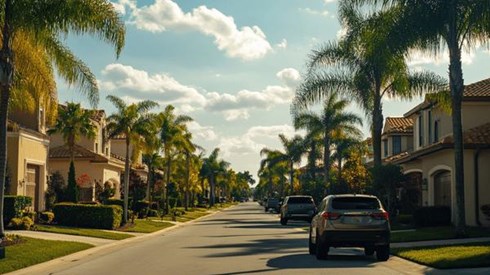Property-Catastrophe Rates Ease at June 1 Renewals Amid Capacity Shift

June 02, 2025

Reinsurance pricing for property-catastrophe excess-of-loss (XoL) coverage continued to moderate during the June 1, 2025, renewal season, with risk-adjusted rates-on-line declining by approximately 10 percent. Loss-free programs saw average rate reductions of 10 to 15 percent, while loss-affected placements were flat to down as much as 10 percent depending on prior loss severity.
According to Howden Re, reinsurers demonstrated increased appetite for core relationships but remained disciplined in their underwriting. Risk-adjusted rate changes ranged from flat to down 20 percent, with most programs attracting full participation from reinsurers, giving ceding insurers leverage to soften terms and conditions.
Capital continued to return to the property-catastrophe reinsurance market, following years of market volatility and limited capacity. New reinsurers and reinsurance entities entered midyear placements, helping supply outpace demand. This trend was supported by improved retained earnings and active catastrophe bond issuance, particularly at the upper layers of reinsurance programs, where rate reductions of 10 to 20 percent were observed.
Early placements and selective structuring were key features of this renewal, with the insurance-linked securities (ILS) market helping to offset reduced allocations from some traditional insurers. Top layers attracted particularly competitive pricing due to ILS surplus, echoing dynamics seen earlier in other peak zones.
"Rate levels remain historically high but are now outpacing loss trends in many areas," said Kyle Menendez, managing director at Howden Re, North America.
The renewal also saw greater strategic alignment in multilayered tower placements. Reinsurers showed increased willingness to underwrite across entire program structures, including concurrent purchases of multiple property products. This approach facilitated broader support from reinsurers that previously operated with caution.
Support extended to per-risk XoL, aggregate, and multi-event coverages as ceding insurers explored more comprehensive protection in response to a rising frequency of catastrophe events.
"We're seeing evidence of measured growth, especially from those [insurers] that had stepped back in recent years," said Brian McKeon, managing director at Howden Re.
In Florida, reinsurers maintained selective confidence amid ongoing legal reforms. Restrictions on assignment of benefits and litigation changes have held, despite legislative challenges. Ceding insurers sought significant additional limit as Citizens Property Insurance Corp. continued reducing its policy count and new domestic insurers entered the market.
A 20 percent increase in the Florida Hurricane Catastrophe Fund retention, projected at $11.3 billion, drove demand for private market solutions for lower layers. This demand was met by increased traditional reinsurer participation, who viewed these levels as more favorable following years of caution.
"Capital is now more abundant and increasingly diverse, yet it's being deployed with discipline," said David Flandro, head of industry analysis and strategic advisory at Howden Re.
June 02, 2025
